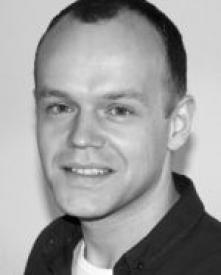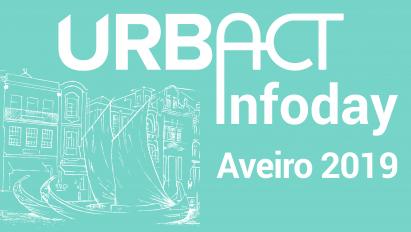-
-
-
Participatory budget
FranceParisCitizens decide on projects designed for and by them.
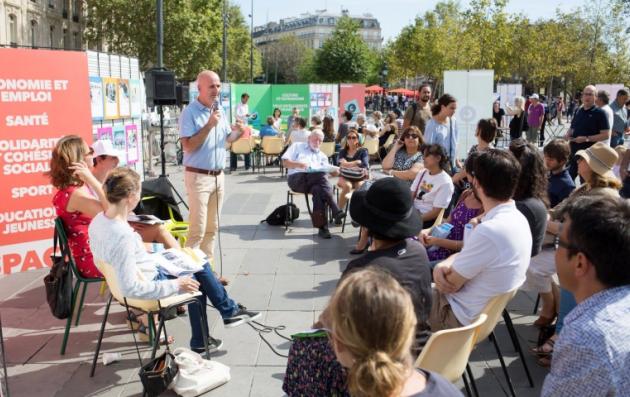
- Participative governance
Copy linkFacebookXLinkedInEmail2 220 445Summary
In late 2014, Paris (FR) Mayor Anne Hidalgo set out to deliver on her ambition to turn the city into a more collaborative one, where residents play an active role in the ideas and decisions which shape its future.
The first step was to introduce a participatory budgeting programme. In 2014, over 40,000 people voted on 15 proposals put forward by the City Council. In the second year, the residents of Paris suggested over 5,000 ideas and more than 67,000 people voted. In 2016, the City has decided to reserve a proportion exclusively for the most deprived areas of the city.
Another proportion was reserved for spending on youth and education projects, with schools being encouraged to participate and children's votes determining how that money is spent. Those children in turn may have educated and encouraged their families to take part. In October 2016, over 158,000 people voted in the latest round, a 39% increase on 2015, deciding how to spend 100 million euros.The solutions offered by the good practice
The Participatory Budget asks people to come up with solutions to problems in their community, on which they are the experts and in which they are highly invested. The nature of the process gives ample opportunity for the plurality of voices to be heard, while also encouraging collaboration and consensus building among participants with similar agendas, and finally giving everyone the opportunity to vote for those ideas which matter most to them.
5% of the capital budget of the city is dedicated to participatory budgeting. Thus the practice means transferring to citizens the design and selection of projects representing a public investment of 100 million euros a year.
Projects submitted by citizens have to be feasible and have to meet three criteria: they have to be about capital, have to be related to cities’ competencies and they have to fall under general interest.
In Paris, we have 21 PBs: 1 PB per district for local projects, 1 PB for the entire city for major or replicable projects, one PB for schools and one for social housing.
Lastly, the Paris Participatory Budget is a year-long process with four main steps. Firstly we stimulate ideas and projects and collect them on our digital platform. Secondly civil servants study the feasibility and evaluate the cost for each project. If a project is not feasible, the sponsor of the project receives a personal answer visible on the online platform. The third stage is the campaign and the vote. Finally the city implements the selected projects.
Building on the sustainable and integrated approach
The Paris Participatory Budget contributes to sustainable urban living since it is a major call from inhabitants. This learning is clear when observing the projects they submit and the ones they choose during the vote.
As an example, there were eight winning projects on the Parisian scale in 2015: one project devoted to bicycle lane development (8 million euros), one project targeting a pedestrian friendly city (8 million euros), one project focusing on the reinvestment of our green belt (old railway line) for 7.5 million euros, one project that aims at fighting poverty (4.4 million euros), two projects on green spaces, including rooftops and urban agriculture (4.3 million euros), one project to develop drinking water fountains in Paris (2 million euros) and a 1 million euro project dedicated to cleaning improvement of the city.
Based on a participatory approach
The Paris Participatory Budget is based on an integrated and participative approach: the policy is inherently participative and coordinated by the head of the City. It involves all departments in feasibility studies and implementation. Innovative digital tools have been developed to support cross-sectoral cooperation and a dedicated team is facilitating these cooperative ways of working.
Also it is based on cooperation between districts and central city offices as a way to articulate global and local scales.
What difference has it made?
In the initial 2014 pilot over 41,000 votes were cast in total. Nine projects were selected. The 2015 iteration represented a significant expansion of the initiative. Over 5,000 ideas were proposed, of which 3,000 passed the initial basic criteria. In the final stage 67,000 votes (+/- 3 per cent of the population) were cast and 188 projects accepted. In 2016, participation rose with 158,964 people voting on a final selection of 219 ideas, from an initial 3,158 proposals. The number of participants was boosted by just over 66,000 children who took part in a special ballot to allocate €10 million reserved for projects in schools and colleges.
Budgeting process is also delivering tangible outcomes: more than a quarter of 416 winning projects have been delivered such as new public gardens, co-working spaces, renovated schools, pedestrian areas, sport facilities, etc. This has brought new ways of working inside the city’s offices based on more cooperation and new kind of relationship between civil servants and citizens.
Finally, the Participatory Budget is also a support for public innovation: the project named “shelters for homeless” has received 21000 votes in 2016, which is the highest number of votes among projects. It is a call for the City to find innovative ways to fight poverty and welcome migrants.
Why should other European cities use it?
We are regularly invited to present Participatory Budget by other cities: since December 2016, we have been travelling to conferences hosted by the cities of Kyoto and Mexico. Delegates from Glasgow and Tallinn came to Paris and we were invited to go to Edinburgh to present our findings to parliamentarians and local authorities.
Also, Paris has been awarded Pilot City by the Open Government Platform last December, as a result of its participatory budget. We see these many invitations to present what we have learned, factors for success and ongoing challenges. We believe it shows other European (and worldwide) cities’ willingness to implement their own Participatory Budget.
-
490_Paris_GPsummary.pdf(PDF, 203Ko)
Emailari.brodach@paris.frRef nid9554 -
Integrated and participative urban regeneration
SpainMurciaIntegrated approach to urban regeneration of a disadvantaged district through a citizen participation process and three strategic intercorrelated pathways.
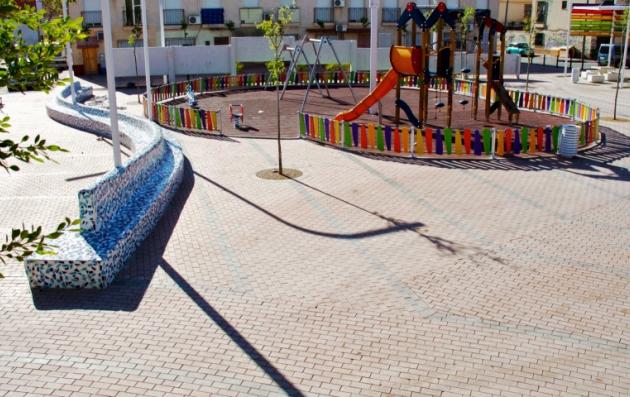
- Urban planning
Copy linkFacebookXLinkedInEmail441 003Summary
From 2007 to 2013, the city of Murcia (ES) has developed an urban project which consists of the regeneration of the Espíritu Santo district using an integrated approach. The approach has been carried out in 3 strategic scopes:
- Improving the physical space;
- Improving the social and cultural environment;
- Improving the economic environment.
The procedures and methods employed involve the need to establish a close inter-correlation between environmental efficiency, technological innovation, knowledge and know-how, and the creation and consolidation of stable mechanisms for social and citizen participation.
By consolidating the equality perspective in all areas during the different phases, the neighbourhood became liveable again, opportunities went up, crime down, and the citizens took an interest in their environment.The solutions offered by the good practice
In almost all of the actions, there is a special focus on ICT, minorities and improving work-life balance:
- Growth and quality in employability by improving professional skills (occupational training) trough integrated itineraries;
- Promoting learning, entrepreneurism and diversifying the economy towards emerging activities with a higher technological content;
- Helping create and consolidate companies, economic incentives, job insertion: diagnosis, development plan and accompaniment for labour insertion, etc.;
- Training and awareness of education, environment, equality and health;
- ICT as an element for promotion and innovation, as well as in the family and educational environment, with improvement of equipment and infrastructures;
- Increasing environmental performance;
- Territorial and environmental sustainability by increasing the collection of waste;
- Cohesion and social welfare, improving relations between educational centres and students’ families, reinforcing institutional capacity;
- Improving quality and effectiveness in teaching: learning as a factor of enrichment, growth and a key element of integration and reinforcing educational specialisation of teachers;
- Specific actions to improve access and enjoyment of culture and leisure, spaces, school reinforcement, free Internet;
- Classrooms, information points and municipal WiFi;
- Placement of solar panels and thermal installations, low consumption public lighting, etc.;
- A local administration closer to the citizens (flexible, effective and efficient), etc.
Building on the sustainable and integrated approach
Regarding the URBACT principles, the project focuses directly on all three items:
- Employability, skill training, integration itineraries, ICT capacitation;
- Ethnic minorities (immigrant and gipsy population) in risk of exclusion;
- Reducing carbon footprint, waste management, tackling water and energy consumption.
The intervention demonstrates an integrated approach to sustainable development by road-mapping realistic solutions to complex problems, working shoulder to shoulder with the community of the district. During the project, we strived and succeeded in identifying social, economic and environmental actions engaging the stakeholders to be the ones to identify and propose solutions to the problems they faced in their neighbourhood.
Proposals and commitment, which were achieved throughout a participatory process marked by the strong involvement of local stakeholders driving change, collaboration across the local (authority) spectrum and the development and implementation of real solutions.
Based on a participatory approach
Coordination with local partners via a citizen and stakeholder engagement programme, centred around involving the district and incentivising residents to take part in the creation of a customised plan to first identify and then address the problems.
Stakeholders in the participation process:
- The municipality of Murcia (housing, culture, social services, education, health, information society, youth and employment and socio-economic data);
- The Local Municipal Board, NGOs, neighbourhood, cultural, youth and parents associations, pastoral council, representatives of minorities and groups at risk of social exclusion (in this case the important gipsy collective of the district), as well as individual citizens;
- Municipal and regional business organisations, regional government (especially education and housing), ALEM (Municipal Energy Agency), the two schools in the neighbourhood, and other entities. The latter through consulting and giving advice, managing assigned actions/activities, and participating in the internal monitoring and evaluation during all phases of the project.
The citizen participation project was conducted through meetings, direct contact and questionnaires leading to a draft proposal (actions, improvements, activities, etc.), which was presented to all stakeholders, after which feedback was initiated to further improve the project centred on the dialogue with citizens.
What difference has it made?
The neighbourhood became liveable again: as the crime rate decreased, the citizens took interest in their environment and opportunities for culture, sports and leisure. Furthermore, it fostered an enlargement of public space and the improvement of the environment. We also took the opportunity to remodel squares and streets and introduce urban art. It allowed us to recondition the quality of cultural, sports, educational as well as social facilities to promote community development and transform the area into an attractive part of the city, with a special focus on ICT, performing arts, music and culture.
This regeneration project also included the adaptation of classrooms for artistic teaching, a fully equipped training centre for social inclusion as well as a centre for artistic and cultural production. We added underground trash containers and improved the illumination of the neighbourhood.
Socially speaking, we created a family support service and self-help groups which self-manage and promote coexistence and environmental education on the recycling and reuse of waste. Awareness training on equal opportunities and non-discrimination has been built up, as well as education and training to access employment in dance, music, theatre and video. We aimed at providing ICT, audio-visual production, soundtracks for video, photography direction, video art, sound and lighting for shows, fashion design, hairdressing, make-up artists and more, for all ages.
Why should other European cities use it?
The intervention in the “el Barrio del Espírito Santo” was directed at tackling challenges that a lot of European cities are facing every day. Murcia is proud to say that this urban project has been an amazing success. The practice is in every way worthy of being called a good practice, and we would gladly share our experience, which complies with the core values of effectiveness, efficiency and relevance.
The project is perfectly sub-dividable (tackling the problems in their totality or tackling any number of problems addressed by the project). Social integration and exclusion, economic and labour insecurity and instability, poverty and conflict in the coexistence of residents, delinquency, and a poorly-educated and low-skilled population are all general problems one expects to find in every city, to some extent, and there is tangible evidence that this project impacts and improves the quality of life in the neighbourhood.
The project offers clear and tangible solutions with a high degree of transferability, relatively easy to adapt and implement, making it a sustainable and affordable practice which cities can easily adapt to their local context, as the entire process is documented, including all evaluation and monitoring to understand our success. We consider it to be an integrated approach to urban development leading to direct compliance with the objectives that our project set out to achieve.
-
489_Murcia_GPsummary.pdf(PDF, 346Ko)
Emailmercedes.hernandez@ayto-murcia.esRef nid9553 -
Kraftsamling: you get what you ask for
SwedenTrelleborgA system that makes sure that all unemployed citizens receive professional service in accessing the labour market.
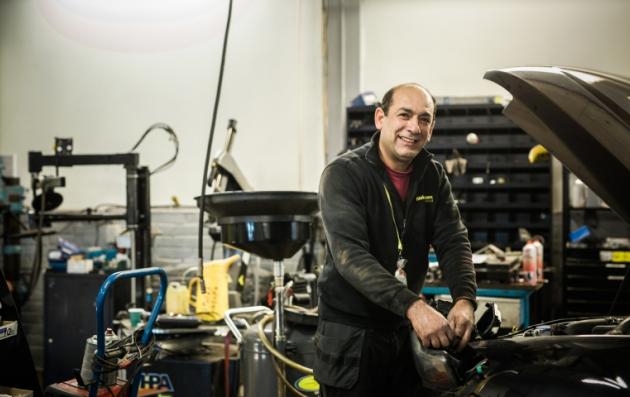
- Social cohesion
Copy linkFacebookXLinkedInEmail43 913Summary
The motto at the Department of labour market in the city of Trelleborg (SE) is that “you get what you ask for”. The city decided to see what would happen if it stopped asking regional trade and industry for general activities for unemployed people, and started asking for jobs instead.
Unemployed citizens need support to enter the labour market. In both 2015 and 2016, thanks to the city's collaboration with over 500 local and regional employers, one person per day leaves welfare support for a new job, or starts studies that will lead to employment.The solutions offered by the good practice
Due to employers not finding skilled labour, the economy is not only sufficiently growing, we also see that with the age composition of the labour force, we have fewer workers paying for a welfare system with increasing costs for the elderly. People having trouble in establishing themselves on the labour market, among them foreign jobseekers with a shorter education, or young people lacking completion of upper secondary school, are sorely needed in the workforce to make sure that the welfare state doesn’t fail.
By using a coupling-system, where the city cooperates with the local employers, thus benefitting both the unemployed and the employers, we make sure that the gap between both is closed.
Different methods are used for different couplings; some people need more time to get the skills requested by the job, while others just need an introduction. In our couplings, we make sure both parties’ needs are met.
Building on the sustainable and integrated approach
Under the umbrella of the Kraftsamling Trelleborg project, we cooperate with local businesses to make sure that they are provided with the service they need, and find competent staff in order to grow.
In Kraftsamling, all employers have a prospective partner through which they can channel their CSR-work. Our objective is to make sure that unemployed gain employment, but this can only be obtained through meeting the needs of the individual employer.
Based on a participatory approach
The Kraftsamling Trelleborg good practice puts jobseekers and local businesses in contact, in order to make sure that firms are provided with the service they need, and find competent staff in order to grow. In Kraftsamling, all employers have a prospective partner through which they can channel their CSR-work.
Our objective is to make sure that unemployed people gain employment, but this can only be obtained through meeting the needs of the individual employer.
What difference has it made?
During 2015 and 2016, we have put one average person per day back to work (or studies leading to work), primarily due to our cooperation with the local and regional employers, under the auspices of not belonging to the labour force by the national employment agency. This is due to our belief that everyone can learn, and that companies need to be involved in this learning.
A taste of our model that gives effective results for the citizens of the city of Trelleborg:
- From control to personal responsibility and trust;
- From telephone hours to total availability;
- From a focus on rights to contributions to self-sufficiency;
- From care plan to establishment plan;
- From social services to efficient management of subsistence allowance;
- From waiting to visit today and decision tomorrow.
Since the last tent years, the trend in Sweden has been an increase in costs for welfare support. This trend has been the opposite in Trelleborg, with declining costs and an increase in employment.
Why should other European cities use it?
One of the current and future challenges for European cities is to make sure that all citizens are included in the labour market, and at the same time to avoid that companies’ growth is hindered by the lack of skilled labour. This current challenge will only grow more challenging, considering the fact that Europe has welcomed immigrants fleeing from war in the Middle East.
We are convinced that all European cities have good strategies for vocational training in schools, but we also believe that flexible ways of learning at a workplace give quicker results. One way of learning does not exclude the other, but one might be more useful in certain situations.
-
484_Trelleborg_GPsummary.pdf(PDF, 873Ko)
Emailpatrik.mollerstrom@trelleborg.seRef nid9552 -
Revitalisation of public spaces
CroatiaZagrebHow a city has decided to spot existing public spaces and improve them in the scope of housing, recreation, leisure and social cohesion.
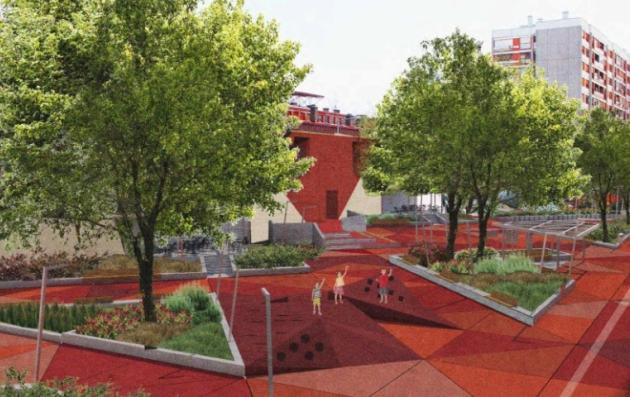
- Urban planning
Copy linkFacebookXLinkedInEmail688 163Summary
Through the introduction of innovative methods, the city of Zagreb (HR) has made the revitalisation of public spaces possible. The project "Zagreb For Me" envisages almost simultaneous interventions in at least 17 locations in the city. The project aims at initiating collaboration between the city, its citizens, institutions and programmes to encourage dialogue and exchange of ideas.
By using innovative methodology, the new added value of the city and citizens has multiple dimensions: social development achieved through participation in decision-making, cohesion, innovation and professional approach.The solutions offered by the good practice
The project is based on an innovative methodology that involves close collaboration between the city and its citizens, but also professional and academic institutions, to develop ways of revitalising existing places, offer them a new life and give them back to the citizens. New added value benefits for the city and citizens are multiple: social development, achieved through participation in decision-making, cohesion, innovation and a professional approach. Selecting the location and defining the intervention range is carried out with active public participation to ensure acceptance and comprehension of the project, aiming at involving the largest possible number of citizens, professional organisations and administrative bodies in this process. Following the selection of locations and their budget range, preparation studies and overall professional programmes of the interventions for all individual locations are made, then carried out following the confirmation of the available budget. The design solutions for the selected locations derive from architectural contests to ensure top quality and a transparent implementation process. The result is a series of interventions in 17 carefully selected public spaces throughout the city, providing design planning and improvement of public space with reasonable budgets.
Building on the sustainable and integrated approach
The project is based on an innovative methodology involving close collaboration between the city administration and its citizens, as well as professional and academic institutions, to develop ways of revitalising existing places, offer them a new life and return them to the citizens. Selecting the location and range of intervention is carried out with the active participation of the public, to ensure acceptance and wide-spread comprehension of the project, aiming at involving the largest possible number of citizens, professional bodies, organisations and administrative bodies in the process. The advantages of the practice are multiple: social development, achieved through participation in decision-making, innovation and a professional approach, and social cohesion of citizens through recreating public spaces based on their needs.
Based on a participatory approach
The selection of locations and range of interventions are carried out with the active participation of the public, thus ensuring the acceptance and feasibility of this widely comprehensive project, with the aim of involving as many citizens, professional organisations and city administrative bodies as possible in this process. The second phase of the project, the study of the locations, considers each location. Once the location is selected, and the scope of interventions and budget are defined, the general expert programme of the interventions is drafted, and urban planning and architectural competition documents are finalised for each individual location. For most of the selected locations, programmes will be developed which are planned to be tested against public opinion, thus looking to ensure citizens' participation in decision-making and the expression of real needs as a contribution to a quality programme. This bottom-up method, viewed from the perspective of citizens and associations, resulted in a better knowledge of needs in the public spaces of the city of Zagreb. A comprehensive study resulted in a quality analysis of the public space of the city.
What difference has it made?
The project has started in 2015 and is ongoing. Scientific research on urban planning has been conducted since, with a comprehensively technical review, identifying problems and giving suggestions for existing public space improvement and the potential for creating a new, kinder space. Also, an interdisciplinary research (direct public consultations, discussions, data collection) on public areas in the city of Zagreb has been conducted, whose restoration and / or improvement would / could significantly raise the quality of life. The innovative method of combining top-down and bottom-up approaches has been tested, and it was found that one method encourages the other, and that the unification enables verification and validation of the results of both studies. Based on the results of the methodology, 17 sites have been selected, and so far, public urban architectural competition for one intervention has been conducted. Although the results are not yet visible in the real space of the city, interdisciplinary and inter-institutional dialogue, and the unusually strong interest and participation of the public, indicate a successful start of the process. A competition on public space as part of "Think Space" was conducted, where numerous interesting proposals submitted, thus confirming the importance of the topic.
Why should other European cities use it?
A comprehensive approach to the study, valorisation and organising of public space of the city, as it is used in the project "Zagreb For Me", represents an innovative methodology that may be of interest to other European cities. In contrast to the established practice of planning that relies fundamentally on professional planning attitudes, or those who consider space transformation on the basis of bottom-up initiatives, this method does not give preference to any of the approaches, but prefers an equal decision-making process. In this way, a fair, impartial and multi-founded solution to the problem of development of modern cities can be achieved.
-
482_Zagreb_Gpsummary.pdf(PDF, 885Ko)
Emailjelena.ricov@zagreb.hrRef nid9551 -
McAuley Place for older people
IrelandNaasThe game changer in city centre revitalisation
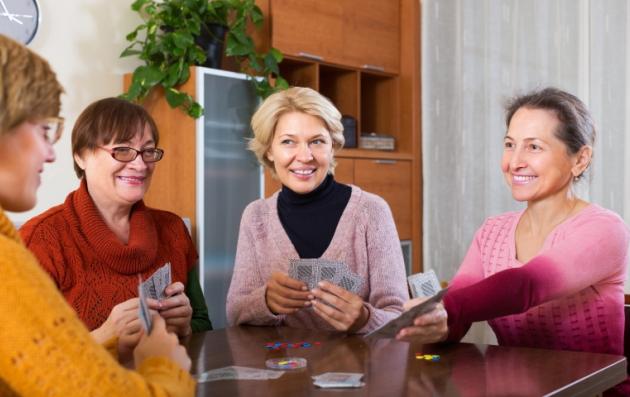
- Climate action
- Social cohesion
Copy linkFacebookXLinkedInEmail20 002Summary
To ensure the quality of life of its older people and their independence, Naas (IE) developed an alternative model to the institutional residential care one. McAuley Place is a non-medical, intergenerational and not-for-profit housing association located in the city centre, its 53 apartments are allocated both socially and privately to 60 people. McAuley Place aims at bringing older people to the heart of the vibrant Naas community. Activities such as the popular Arts and Crafts programme, by attracting inhabitants of all age, ensure the social inclusion and integration of the tenants. Since 2008, McAuley has been providing an environment in which all stakeholders, residents, workers and volunteers (often students), can connect.
The solutions offered by the good practice
McAuley Place offers the following:
- It indicates the primary importance of operating to a Value-System. This is seldom the case in urban plan-making. Stating a value-system up front means you have to carry it through into policy, plan, and operational life;
- McAuley is driven by the UN Principles for Older People, indicating clarity in its philosophy and ethos, but also indicating how these principles are put into practice;
- McAuley offers a model of sustainable urban living, with a town centre location and a mixed-use campus, where culture operates as a critical platform, accessible to both resident and visitor alike;
- It has been achieved through networking a cross-institutional approach and leveraging vertical integration through support from government, local authority, local business, and community groups;
- In terms of both policy and operational fronts, McAuley Place strives to achieve horizontal integration through synthesising strategy which links social, economic and environmental perspectives;
- McAuley illustrates inter-generational participation through activities which draw in all age groups into an intentionally mixed programme.
Building on the sustainable and integrated approach
- McAuley Place is guided by a holistic thrust. It works to achieve an awareness of the total systems it operates within, is inspired by its vision of the shape of future success, and applies strategy, action and tools to achieve it;
- While working within a systems approach, which acknowledges the complexity of urban places, a thematic framework helps to structure this complexity, and suggests the need to achieve sustainability under key headings, e.g. social sustainability, cultural sustainability, economic sustainability, environmental sustainability, movement sustainability, and the spatial sustainability of urban form;
- Key areas of performance include the re-use of under-used and vacant town centre sites, the application of mixed land use, combining the diversity of complementary activities in a mixed programme;
- McAuley reduces the need for vehicular use, through its town centre location, which prioritises pedestrian access through walking and cycling;
- McAuley Place achieves environmental objectives through recycling, water conservation, sourcing local food products for its tea rooms, and by providing ecological green spaces.
Based on a participatory approach
Openness, transparency, and communication. It strives to create an environment in which all its stakeholders, residents, workers/volunteers, can communicate, connect, and collaborate.
- McAuley Place encourages and relies on a wide range of support from local government, local business and community group stakeholders;
- It is the practice in McAuley Place to encourage a wide cross-section of stakeholders to become available for interviews for media/research, etc.;
- High levels of participation in its Arts and Crafts programme reflect the critical importance of creativity, and help build a culture of social contact.
What difference has it made?
- The UN Principles on Older People hang in the foyer, the mixed-use campus sits around you; tea rooms, 53 apartments, Arts Hub, community centre, walled garden and Health through Learning Project [Phase 1];
- The events programme is real, varied, and very well supported;
- The tea rooms are a huge success, a bustling meeting point for the town, where young and old mingle, where wonderful food is served, and where up to 35 volunteers support the full-time staff;
- McAuley is a huge positive statement in a town centre which has suffered economically, and where there are many vacant buildings;
- It illustrates how top-down governance, and bottom-up community energy can combine to tackle what appear to be intractable social issues, e.g. the isolation and poor quality of life suffered by older people;
- The model of McAuley Place has drawn much interest from media and TV, and has been endorsed by the President of Ireland;
- Evidence of huge ongoing community support. Evidence of lived lives.
Why should other European cities use it?
- The relationship of society to its older generation is a universal issue. McAuley Place shows how this issue can be approached, and how existing poor practice can be challenged;
- It demonstrates an inter-disciplinary and inter-sectoral approach embedded in a campus where the mix of residential, Arts Hub, community centre, restored garden and tea rooms creates the kind of rich ecology which produces daily minor miracles, and sustains mental health and human existence;
- McAuley is socially innovative, it has created a new kind of infrastructure, and it has done this by working in a cross-institutional manner, building bridges between top-down governance and a bottom-up “can-do” mindset;
- It has used a hard infrastructure from a past legacy and fused it with the soft infrastructure inspired by a value system expressed in the UN Principles for Older People;
- McAuley Place is an innovative contemporary institution which attracts and retains an impressive contribution from volunteers;
- Every city and every neighbourhood would benefit from a McAuley Place.
-
463_Naas_Gpsummary.pdf(PDF, 75Ko)
Emailskavanagh@kildarecoco.ieRef nid9544 -
All united for more biodiversity
FranceEurometropolis StrasbourgA charter to manage green spaces in a eco-friendly way

- Climate action
Copy linkFacebookXLinkedInEmail484 157Summary
Strasbourg (FR) is steadily working on improving its environmental impact, and on promoting biodiversity. In 2008, it stopped using pesticides and integrated plants into the urban landscape. The charter “All united for more biodiversity”, launched in 2012, constituted another step in this direction: it gathers 75 signatories which are both professional and non-professional organisations. They commit to biodiversity by taking actions such as reducing light pollution or setting up green walls. Through the charter, all stakeholders are given the opportunity to work together, thus strengthening an eco-friendly network and multiplying its impact on the territory.
The solutions offered by the good practice
Supporting nature and biodiversity is an absolute necessity. The charter “All united for biodiversity” can help answer some issues faced by cities nowadays. By engaging all willing stakeholders in the territory, the charter is strengthening the existing ecological network. This is a significant improvement: the actions of the Eurometropolis of Strasbourg are limited to some areas, but with the help and good will of many stakeholders, the impact can be multiplied. Moreover, the stakeholders are accompanied when they sign the charter. They have to choose between six actions of various types that are listed by categories. For example, “Preserving the environment” equals abandoning the use of pesticides, “Save energy and resources” means reducing watering or light pollution, “Planting for biodiversity” is implementing local species and meadows for bees, and “Protect and develop the ecosystem” includes installation of biodiversity shelters and green walls and/or roofs. All of these actions can truly improve biodiversity around the firm that chooses to sign, and thus improve the possibility of a strong ecological network.
Building on the sustainable and integrated approach
The project “All united for more biodiversity” is based on sustainable development and participatory approach. The commitment of a wide panel of stakeholders all along the territory is making the city greener and more ecological. By reconnecting the spaces of nature, this ecological network will be useful to make the city more resilient and better integrated into its environment. By sharing nature-friendly managements, it is also improving the global natural health of the territory. Another important asset of this project is the commitment of all: businesses, organisations, sponsors, social housing, administrators and developers, as well as the communes within the Eurometropolis of Strasbourg can be involved and act for more biodiversity.
Based on a participatory approach
The charter “All united for more biodiversity” is a participatory approach. Firstly, all stakeholders on the territory were given the chance to work together for the first time, thus developing a global and coherent approach and connecting ecological spaces responding to each other. This process has a real strength, as it shares experiences. The stakeholders can exchange their successes and problems, therefore creating another type of network. Moreover, the Eurometropolis is supporting the change of management in a real cooperation between the local administration and private or public bodies. Secondly, the actions proposed in the charter often create a new dynamic. Employees of the signatory structure might be invited to participate, and many examples show that they are genuinely interested in the procedure. 88% of the concerned structures decided to involve their staff. Managing green spaces in a sustainable way is not only an environmental matter, it also creates new opportunities to develop social links inside the firm.
What difference has it made?
Upon its creation in 2012, the Charter was signed by 23 stakeholders, which is already something. Today, five years later, we have the pleasure to count 75 signatories, a real community reunited for biodiversity, and for all of them, the signature had positive consequences. One of the main measures has been the abandonment of pesticides in the management of green spaces. While 89% used them when signing, this commitment truly made a difference. 84% of the signatories have pledged to plant local species, whether meadows, natural hedges or fruit trees. Many detailed examples can be found in the guide printed recently, but here is an example: Mondelez International (Suchard factory) signed the charter in 2012. Its first decision was to involve the staff: the choice of the first six actions was made in cooperation with a group of motivated employees. Among the first decisions were the ban of pesticides, a fauna/flora diagnosis, and the implementation of 19 beehives. Many other projects followed: a shared garden, the installation of 16 nest boxes (both specialised and unspecialised), etc. There are more future projects: shared composting, the implementation of a school orchard and fruit trees, the creation of a pond...
Why should other European cities use it?
This project is unique because it not only involves the citizens and the public stakeholder, but also the professional area. They have a real allowance on the territory, but paradoxically, they are less often involved in biodiversity projects. This good practice can be very interesting for other European cities because the loss of biodiversity and the sustainable city is not an issue faced only by France, but by all other big cities in the world. An ecological network at a different scale could also be imagined: European cities working together to improve the place of biodiversity. Since the Paris COP 21 climate change conference held in December 2015, 175 countries committed to reduce climate change: no doubt, increasing biodiversity and ecological management is part of the process.
-
455_Strasbourg_Gpsummary.pdf(PDF, 322Ko)
EmailMina.CHARNAUX@strasbourg.euRef nid9542 -
Building an age-friendly city
SpainBadalonaThe story of how to implement an age-friendly urban strategy to promote citizens' health, inclusion and wellbeing at all stages of life.
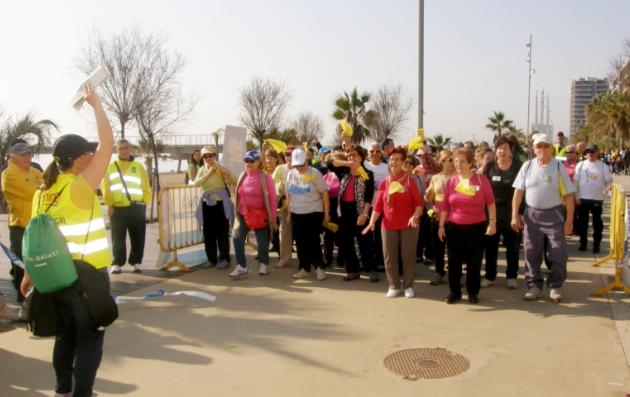
- Social cohesion
Copy linkFacebookXLinkedInEmail215 634Summary
Demographic change is one of the key societal challenges that cities are facing. The number of elderly citizens is increasing continuously, but cities are struggling to adapt to their needs. The city of Badalona (ES) acknowledged this mandate for change and demonstrated that it is possible to redesign the local health and social services to improve the quality of life of elderly people.
Through several initiatives and projects launched since 2012, Badalona aims at putting the citizen at the centre of the continuum of care, including vertical integration (between different levels of care) and horizontal integration (between different local services, e.g. social services, employment and housing). The results are an improved quality of care, and more stable interconnections between different public services.The solutions offered by the good practice
The good practice in Badalona is formed by a set of interrelated solutions that conform a holistic approach towards active and healthy ageing, while including all the relevant stakeholders within an innovation ecosystem.
The practice is completely aligned with the policy level, service provision, industry level, academia, R&D activities and the civil society throughout a participatory process that enables a common design, and redesign of the overall strategy.
The practice is represented mainly by four different solutions:
- Badalona Towards a Healthy City: a city project that fosters and promotes healthy habits within citizenship, and helps to prevent disease with a clear participatory vision and networking view;
- R&D Chair between Badalona Serveis Assistencials (BSA) and the Open University of Catalonia UOC): with the objective to foster the research and innovation actions based on the use of ICT in the fields of health and social care;
- Badalona Reference Site on Active and Healthy Ageing: where 24 actors, covering the Quadruple Helix of Innovation within the city of Badalona, have obtained the recognition of the European Commission, and operate in a coordinated manner towards the common goal of building an age-friendly city;
- Badalona Health Observatory: merging environmental, demographic, social and clinical data towards identifying patterns and determinants of healthy living within the urban context.
Building on the sustainable and integrated approach
Active and healthy ageing should be understood as the way of optimising the health opportunities, participation and security of the people as they age. We are moving from a conceptual healthcare model that deals individually with each citizen and that considers him/her a passive actor of the system towards a model that fosters the rights of old people, their autonomy and the establishment of social relations. They are appraised as change actors, recognising the values and competencies that they bring into the community and the main objective is the improvement of their quality of life.
Tackling ageing from this new vision requires taking into account the following concepts: autonomy and dependency, participation, the vital course of life, cultural aspects, inequalities (in terms of poverty and social exclusion) and environmental factors.
The project deployed in Badalona is fully built on the top of the sustainable and integrated approach in all of the dimensions as defined in the URBACT values.
A full ecosystem of partners covering the Quadruple Helix of Innovation work together (vertical integration) towards converting the city into an urban age-friendly innovation ecosystem. This is greatly improved through the regional and international cooperation. The interventions deployed through the Reference Site network combine physical, economic, social and the environmental dimensions (horizontal integration).
Based on a participatory approach
The target of this practice mainly comprises the Northern Barcelona healthcare region, where the assigned population reaches 545,000 inhabitants. Even though the city of Badalona is the coordinator of the initiative, there are other municipalities that are also benefiting from the holistic strategy: Santa Coloma de Gramenet, Sant Adrià de Besòs, Montgat, Tiana, Alella, Teià and Masnou. This shows a participatory design not only at a local level, but also at metropolitan area level.
The leading ecosystem of the practice has been collaborating for many years through the so-called Healthcare Boards, managed by Badalona Serveis Assistencials, to engage all the relevant stakeholders at local level in order to contribute to shaping the health and care model deployed.
In 2016, this consortium presented the city's application to become a Reference Site within the European Innovation Partnership on Active and Healthy Ageing. Its members bring full coverage to the Quadruple Helix of Innovation:
a) Government health and social care provision,
b) Industry,
c) Academia and research and d) civil society. Coming from this application, the city's reference site was validated and rewarded with 2 stars out of 4.
What difference has it made?
In Badalona, the whole care model puts the person at the centre of the continuum of care, including vertical and horizontal integration. The internal assessment conducted shows that there has been a reduction in the average length of hospital stay, in the average number of bed days, and in emergency visits.
Furthermore, the clinical pathways developed have facilitated an improvement in the process outcomes, including compliance and adherence to the guidelines. These processes have improved the functional status and health outcomes of the elderly, and have led to a reduction in the operating cost of clinical services, while increasing the quality of life of older people living in an urban context.
Another example are the economic opportunities that emerged from the inclusion of the private sector through collaboration agreements, meaning to bring new ideas into the market, first through a piloting phase, and later implemented. Three good examples of such strategies are:
- ITHACA project (BSA - Novartis - Indra): monitoring hypertensive patients at home, and including an educational programme;
- Caring.me project (BSA - Arvato/Bertelsmann): tracking patients impaired by depression through an Internet Cognitive Behavioural Therapy Intervention;
- AsmaProcare project (BSA - IN2): a mobile application that manages patients in acute stage of asthma and avoids as much as possible income visits.
Why should other European cities use it?
Interest in how things are done by the Badalona municipality has been widely demonstrated. The partners involved in the ecosystem of Badalona are actively contributing to European co-operation and consequently, to transferability through their participation in relevant EU strategies.
The experience of BSA in EU-funded projects dates back to 2003, when, following the recommendations from the strategic plan, the organisation started its R&D specialisation strategy towards ICT solutions, to improve the care provided to its target population. Following such an approach, BSA started looking for networking opportunities, both at national and international level.
Since then, BSA has participated in many EU projects and different funding programmes such as AAL JP, FP7, CIP, DG SANCO Health Programme, and more recently in H2020. The role in different partnerships has mainly included piloting leadership, evaluation modelling and evidence generation, care pathway design and co-design processes.
Two good examples, which show that emerging learning and experiences are being shared with other regions at international level, are:
- The case study from the SIMPHS3, conducted by the Joint Research Centre of the EC;
- The ACT Cookbook.
-
471_Badalona_Gpsummary.pdf(PDF, 307Ko)
Emailjpiera@bsa.catRef nid9547 -
Municipality attendance vehicle
PortugalPalmelaA travelling van visiting villages geographically and socially isolated using information and communication technology (ICT)
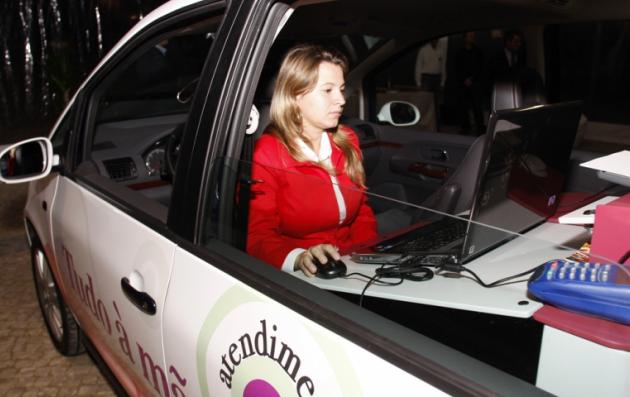
- Participative governance
Copy linkFacebookXLinkedInEmail62 831Summary
The Municipality Attendance Vehicle of Palmela (PT) is designed for citizens who live far from the central public services of the city, or for inhabitants who are socially and economically isolated. The vehicle is a living lab which provides all local public services, and several national ones in a technological way. Its schedule allows citizens from the most rural areas to easily access all the services provided by the municipality. With 32 bus stops, it is the first travelling citizen store in Portugal. This initiative shows how a city can combine an approach both human and connected.
The solutions offered by the good practice
At first, the services provided by VAM were those treated at a municipal service desk and related to urbanism, water and sewage, advertising and occupation of public space, licenses for business activities (schedules and endorsement of licenses), acquisition of lunch passwords in schools, requisition of school transports, information and consumer support, miscellaneous licensing, presentation of opinions, suggestions or complaints, and information on cultural, sporting, touristic and leisure offers. Through an agreement with the Central Administration Agency (Agency for the Modernization of PublicServices in Portugal), VAM then became the first mobile one-stop-gov, providing services on social security, pensions, justice, registry and notary services, health, and much more. In addition, it’s also possible to pick up and return books requested via the internet from the municipal libraries of Palmela. In this way, VAM contributes to the reduction of bureaucracy and the reorganization of public services, thus increasing the quality of citizens’ life, good governance and simplification of public service processes, ensuring equal access to public services for rural citizens and citizens socially and geographically isolated, and a greater involvement of citizens in setting priorities in governance.
Building on the sustainable and integrated approach
VAM is part of the municipality of Palmela's integrated policy for urban development. It reflects the growing concern about the integration of urban and rural areas, viewed as complementary in a society with different lifestyles, thus requiring various modes of service supply. Considering the peri-urban territory and the citizens' needs, VAM is the best solution to satisfy these needs, engaging all stakeholders through an agreement between the local and central administration. This process contributes to local synergies, and promotes territorial sustainability and cohesion by taking into account the principals of subsidiarity and solidarity. To this end, VAM interconnects with the functional areas of municipal services, such as urban planning and strategic planning, that acts as the brain of the strategy. The opinion of citizens, companies and other stakeholders, as well as the holistic vision and the integrated work between several municipal services, are one of the crucial aspects to ensure the sustainable and integrated approach to tackle urban challenges and needs. It's a "less money, more innovation" policy that ultimately aims to increase resilience, the cohesion of territories, social inclusion and public shareholding without forgetting the compromise between the organisation, citizens and businesses (namely, maintain the quality of public services provided in different shapes).
Based on a participatory approach
Palmela started the co-design by organising some executive meetings including the population. This way, people could see who was ruling the place where they lived, they could talk about their needs and suggest solutions. Again, the beginning of VAM’s work was a way of squeezing the distance between citizens and executives. Citizens can solve their problems near the place they live and pass their concerns on to the person they talk to. On the other hand, municipality employees are much more motivated to listen and to try and help the population with issues. Inhabitants took part in the conception of VAM project through meetings with neighbourhood associations, “Parish Weeks” (decentralisation of the local government to the five parishes for a week) and public debates, as also thought communication with the different city hall employers. At the same time, a co-working process as an extern stakeholders work occurs inside the City Hall, that leads not only to a co-design process but also a co-production one. The implementation of the project includes various partners such as AutoEuropa (vehicle production), AutoVision and CEIIA (R&D Centers), in order to satisfy the citizens' needs, and provides the city hall with solutions in smart symbioses and synergies.
What difference has it made?
VAM is part of the Integrated Urban Development, Governance and Social Inclusion Strategies of Palmela municipality. The VAM project contributes to the improvement of quality services available to citizens, tailoring the services to their needs and thus avoiding long travels through the country, to reducing bureaucracy and streamlining processes, to increasing the efficiency and effectiveness of services in a global quality perspective in accordance with the new model of decentralised attendance of public services (integrated and multichannel), to the organisational development and economic and financial sustainability of the municipality; to the promotion of innovation for the benefit of local communities, and to the increasing qualification of human resources. Therefore, VAM is an important project for territory development, increasing the ability to attract and support inhabitants and economic activities as well as promoting social and economic cohesion and governance-by-partnership processes. By using the Internet in order to find the best solution for citizens' needs, the VAM project is a crucial stage in the implementation of the Palmela Human Smart City Hall strategy.
Why should other European cities use it?
The VAM could be replicated in the whole country, or in other European countries, because a territorial presence of public services in rural or isolated areas has been rethought in most countries in the European Union. Considering the need to provide public services to these populations, usually with specific needs, and the economic and financial unfeasibility to maintain the traditional fixed front desk administration, the bet on a format using a mobile unit promotes greater efficiency and effectiveness, allowing even greater personalisation of the service provided. The possibility of using vehicles with different functions of public services (i.e. health and education) could be considered.
-
449_Palmela_Gpsummary.pdf(PDF, 667Ko)
Emailjcarapeto@cm-palmela.ptRef nid9539

